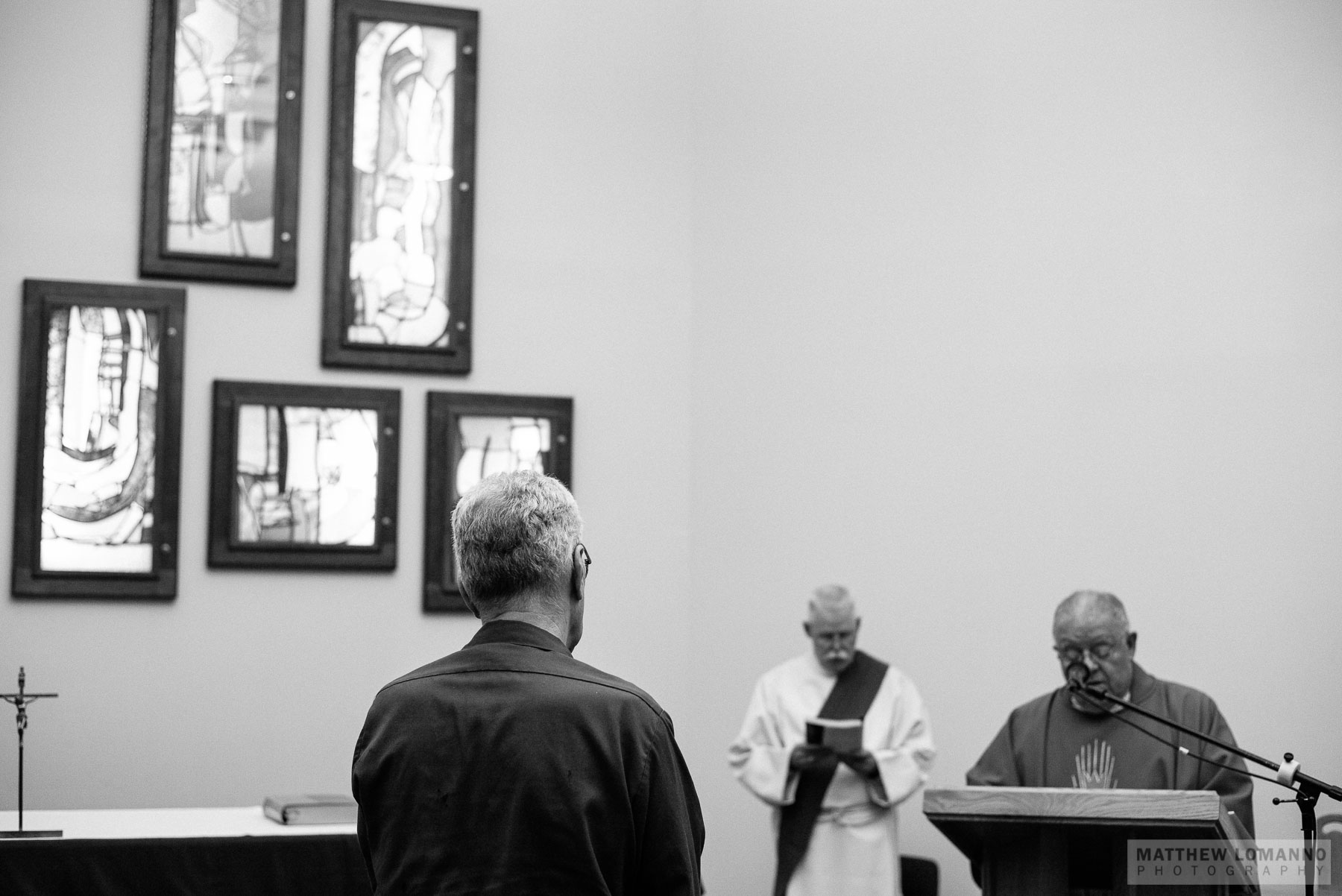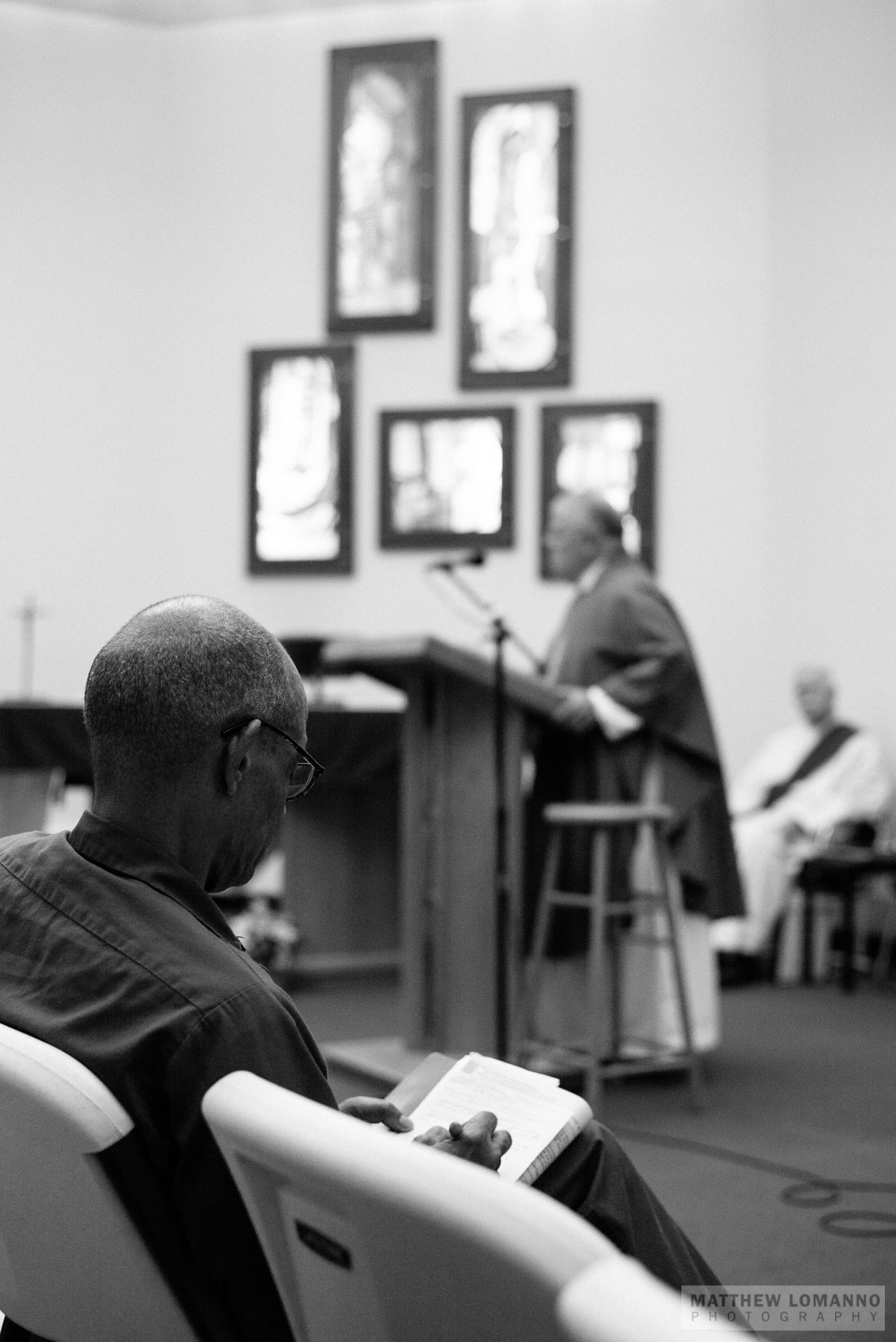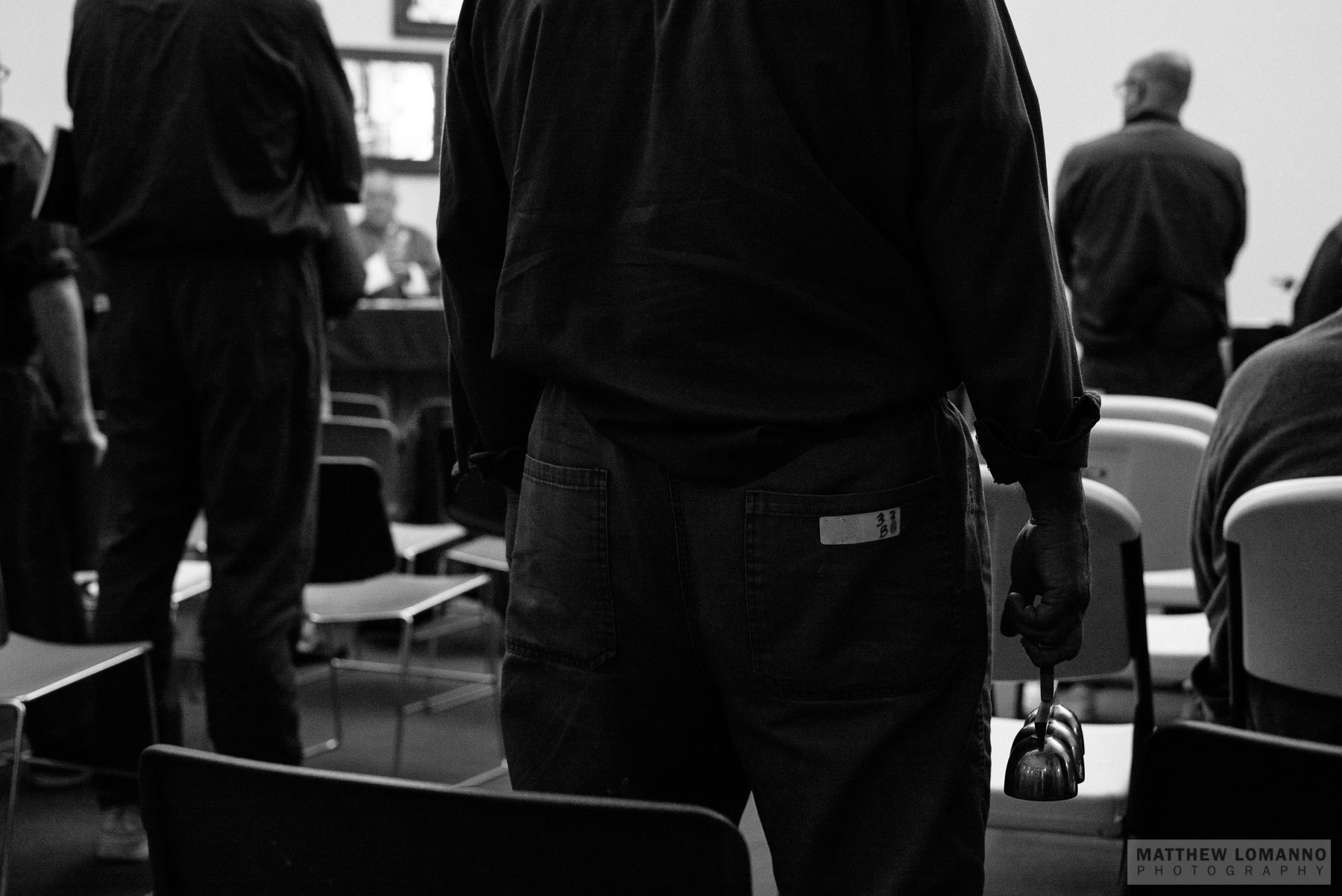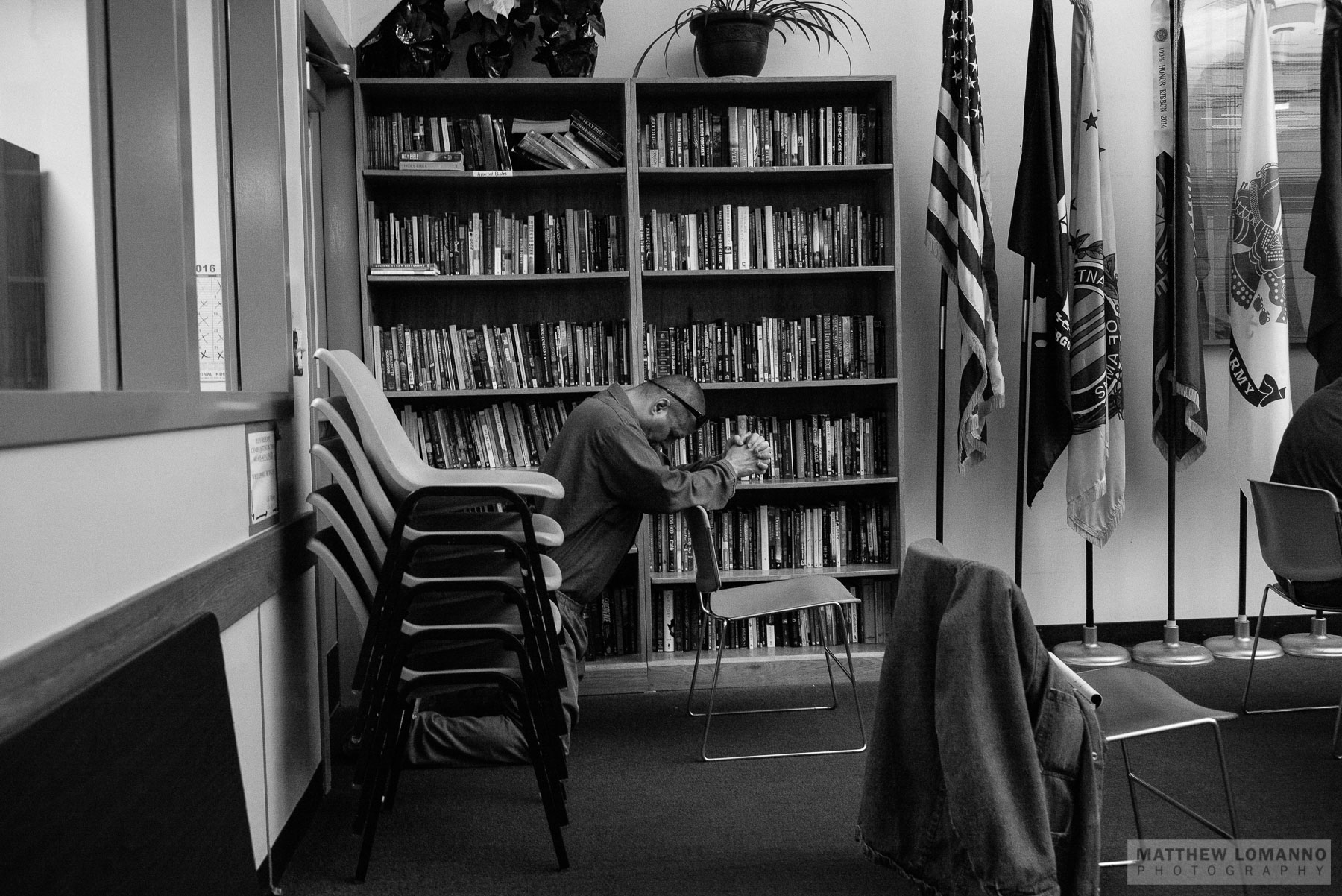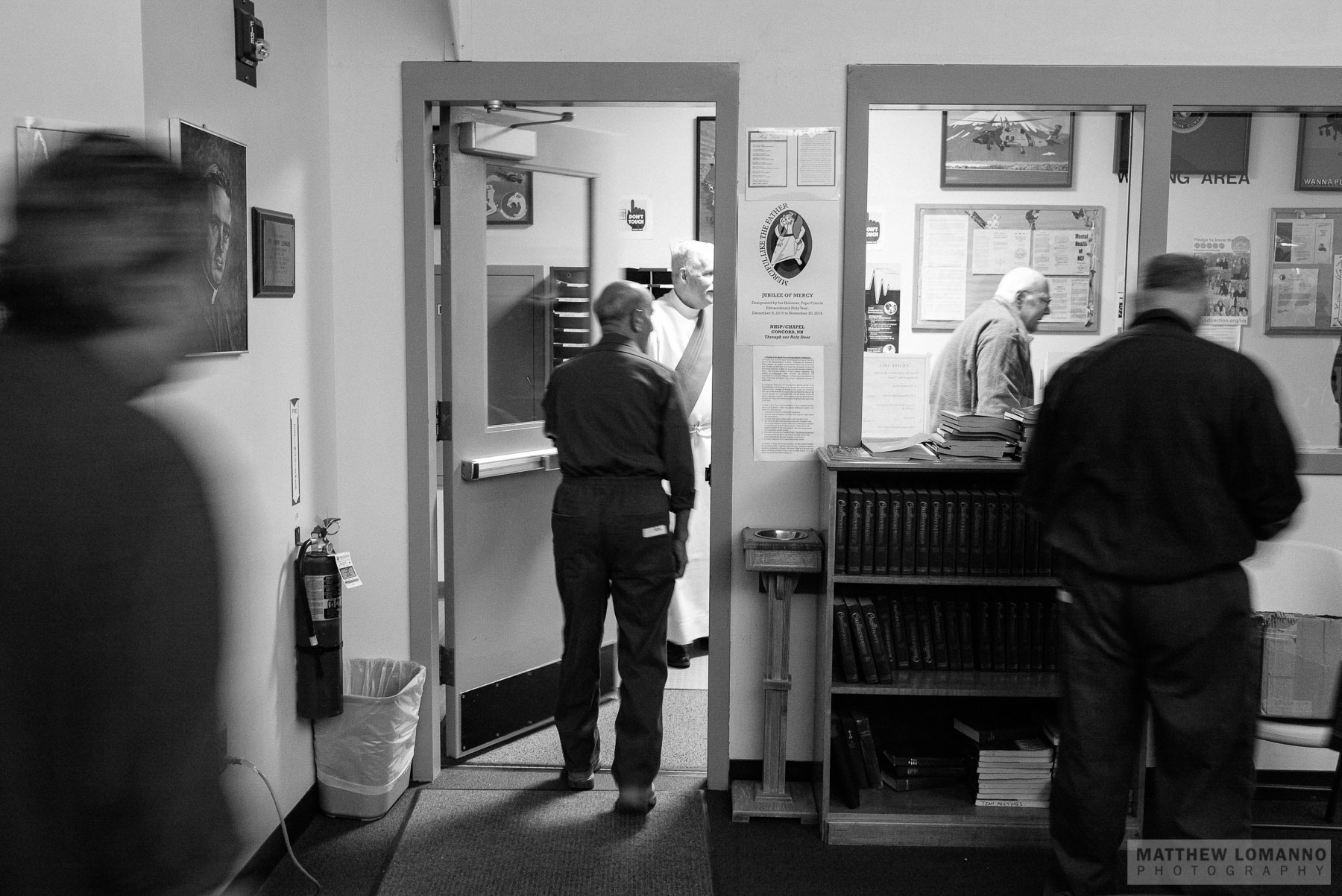2016 was a Year of Mercy for the Catholic Church, and Holy Doors were established throughout the diocese (at least one in each deanery) for the faithful. One such door was made in New Hampshire's state prison in Concord, upon the request of an inmate while Bishop Libasci was visiting. As it was very likely the only Holy Door in the world located in a prison, the diocesan magazine featured it in an article ("Mercy Behind Bars", Sept/Oct 2016). I was asked to make photographs.
This wasn't my first assignment in the state prison: one of my first jobs for this magazine was a feature on the prison chaplain, who's also a Catholic deacon. That was long ago, and, besides the stresses of photographing a subject, I had to be keenly aware of my surroundings and not wander from my escorts. Even that wasn't sufficient: we had just stepped outside to tour the yard when we were called back over the intercom by the watchtower. So much for that photo op.
While I had some familiarity with the process and environment, this assignment had its own challenges. First, the prison Holy Door was nothing but the door to the chapel with a small sign signifying its status; no other decorations were permitted. So it's a door.
Second, I'd be photographing the weekly Mass held in the chapel. A local priest visits and says Mass there, assisted by the deacon. But, in discussing this assignment with the communications director and the editor, we decided not to show any of the inmates' faces. We could have requested photo releases from them, but with a couple dozen inmates in attendance, that could have quickly become out of hand. Furthermore, my bosses wished to avoid any potential criticism that we were glorifying the inmates. The story was about the Holy Door and the unique opportunity for blessings it brought to the inmates and the prison. We didn't wish to emphasize any individuals there, at least for this article. So not including inmates' faces in the photographs was another limit.
Finally, and I didn't discover this until I was there, but the lighting in the chapel was some of the worst I'd ever seen. Large lamps suspended from the 30'+ ceilings were directed upwards, resulting in dull, flat light. Better yet, the bulbs were old-style fluorescent ones with major color shifts seen from photo to photo (and sometimes even in one frame). The magazine wanted color photos, of course, but I knew the results would be far better in black & white.
Despite all of these, entering this subculture--convicted, imprisoned criminals who are also practicing Catholics--that is far from our daily lives was admittedly surreal. I watched as the inmates prepared for Mass: rearranged the chapel from the previous Protestant service, set up the altar, rehearsed the music, assisted the deacon. I met a few, and while not verbose, they were friendly and pleasant. Most importantly for my working there, they were focused on the Mass and didn't seem to mind my presence. For all of its photographic failings, the space became transformed: for that hour, the reality of being in a prison was forgotten, and the reverence I witnessed there was no different than any of the dozens of churches I've visited over the years. I'd like to think that, unlike these other places, living here, the spiritual can take priority in a peculiar and special way.
